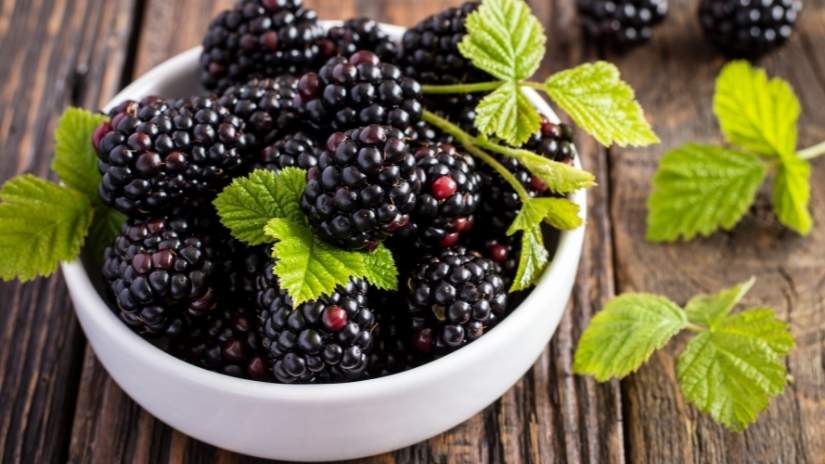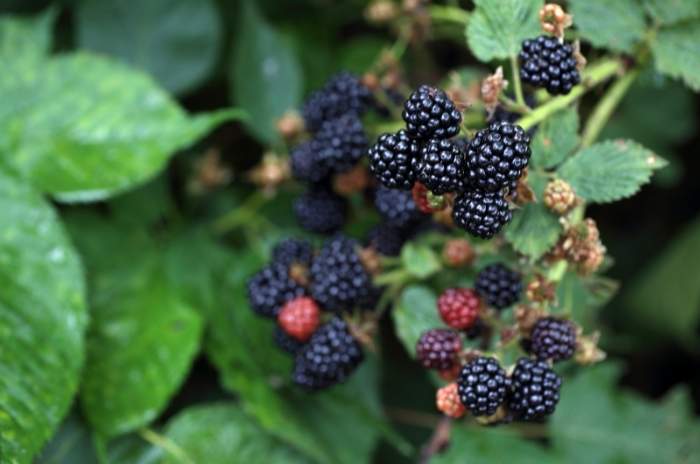The blackberry (Rubus allegheniensis) is the official Kentucky state fruit and has been since it was first adopted in 2004. Blackberries also go by the name of “brambleberry” or “bramble raspberry” and they have been commonly grown and eaten throughout the nation for hundreds of years.
They are native to the Northern hemisphere and have extremely sharp spikes that cover the stem of the plant they grow on, known as “thorns.” Many Kentuckians use blackberries on a regular basis, accompanying cereal, yogurt, and smoothies very well. They are also used to make desserts, pies, jams, jellies, and even wine. Blackberry cobblers are almost a delicacy in Kentucky!

Kentucky first began adopting its own official state symbols in 1792, the first symbol was the state seal. A few years after this, many other symbols were adopted, each having a role to play in the history of the bluegrass state and all intertwining together nicely.
What is the State Fruit of Kentucky?
Blackberries are used frequently within the state, many believe this is due to them being incredibly easy to grow independently, and a good plant will produce crops for around 15 or more years. Their taste also ranges massively, from sweet to sour and everything in between.
The name “blackberry” is actually the name of both the fruit and the shrub, and they rely massively on bees visiting to distribute their pollen. Blackberry blossoms are fantastic nectar producers, and the bees that visit the blackberries typically produce darker, fruity honey.
Blackberries are very adaptive and can tolerate many different types of soil when compared with other fruits, especially berries. They prefer sandy soils with plenty of organic matter, and planting is advised to do during the dormant season, but February or early March are also good times.
Funnily enough, there is a superstition regarding blackberries that originates from the United Kingdom, which says that blackberries should not be picked and consumed after the 15th of September!
Apparently, the devil has claimed them past that point, leaving his mark on the leaves. Many British and Americans still believe this today, and there is some weight behind the theory, so go out picking before September 15th!

In the UK, September 15th onwards typically marks the end of the summer and the “good weather”; therefore, the colder and wetter climate leaves the blackberries to become infected by molds and bacteria that make the fruit more toxic and bitter tasting.
It is also advised when picking blackberries not to pick the fruits lower down and closer to the ground, this is because more insects have access to them and also to avoid them being coated in dog urine!
Blackberry Fun Facts
Blackberries are an awesome fruit that is incredibly versatile, too, they are grown in so many places around the world and have been around for years and years. This is one of the reasons why there are so many fun and interesting facts about them.
Here are some fun facts about blackberries that you probably didn’t know:
- There are over 375 different species of blackberry found in the world!
- The Greeks used blackberries as a remedy for Gout, and the Romans would make tea from the leaves of the blackberry plant to treat many different illnesses.
- The largest blackberry plant was around 6 meters in height.
- The largest blackberry fruit recorded was 3 inches long.
- Many caterpillar species enjoy feeding on the leaves of blackberries.
- Blackberry is not actually a singular fruit, it is an accumulation of many different berries.
Final Thoughts
Most states will have their symbols showcase a relevant story that is indicative of the state and its history, and the Bluegrass State puts its history and what it stands for across very well in the Kentucky state fruit.
This interesting fact about Kentucky and a whole host of others is what makes the state so unique and fascinating to those that live there or are researching the historical events or geological makeup of the state.


